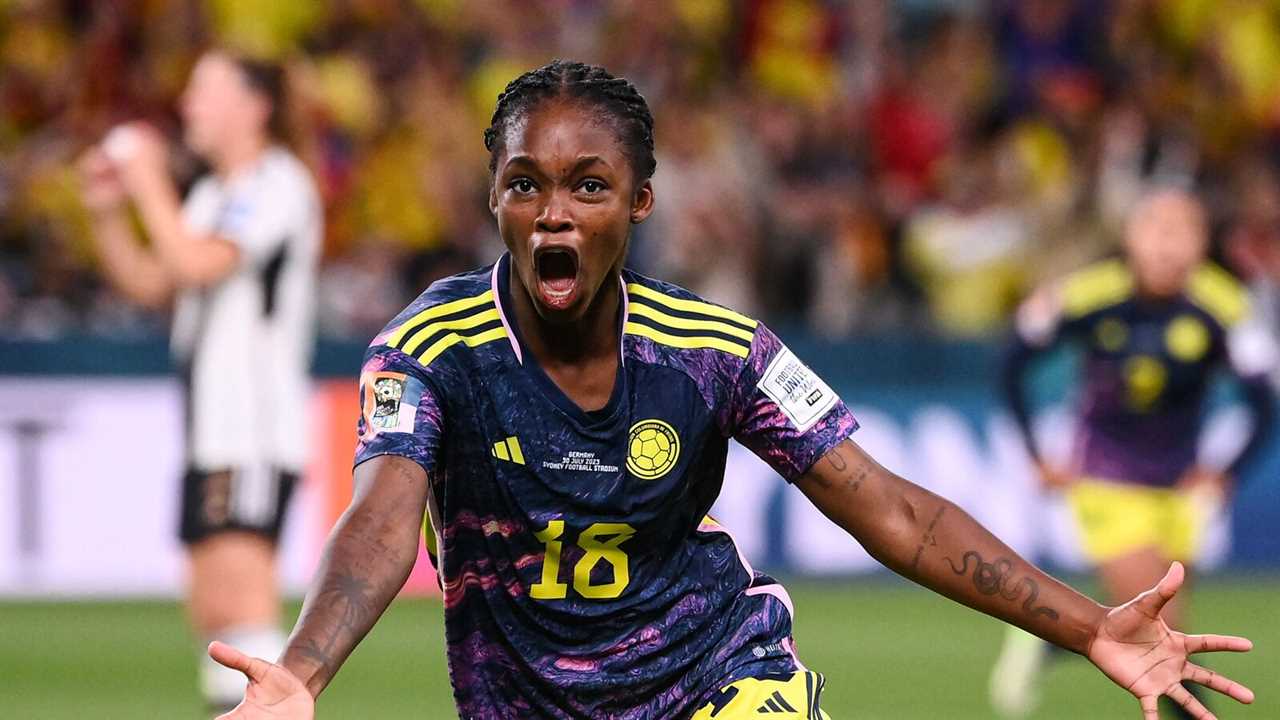
Given where the journey had started and where it had led, it was no wonder that watching the Philippines win a game at the Women’s World Cup felt as if it defied rational explanation, even to those involved.
Not quite two years ago, the Philippines had toiled to beat Nepal in a qualifying game just to earn a place in a low-profile regional tournament. Now that same team had beaten New Zealand — on home soil, no less — and with the whole world watching.
For those who were part of that journey, the distance traveled and the ground traversed seemed too great to be feasible. It was impossible to imagine that a team that had been there could ever be here, and vice versa.
“Overwhelming, crazy,” said Sarina Bolden, the live-wire forward who had scored her country’s first goal at a World Cup. Her coach, Alen Stajcic, found it hard to pitch his hyperbole. He started out at “staggering” and went from there, cycling through “miraculous and unbelievable” before landing on “mind-blowing.”
The emotion, the euphoric instinct to attribute the wondrous to the divine, was understandable. The Philippines had entered the World Cup as a rank outsider. “No one expected us to win,” Bolden said. “We’re used to that.” Its team had never won a game at the tournament before. That was not desperately surprising: It had previously played only one, and that was last week. Just a few months ago, it was ranked outside the world’s top 50.
The thing about miracles, though, is that their mechanics can be a little more mundane than they may first appear. The Philippines might have left the tournament precisely as anticipated — after the group phase, eliminated thanks to an unceremonious 6-0 defeat to Norway — but not before it left an indelible mark.
Its victory against New Zealand was the greatest surprise of a World Cup brimming with them. It is just that, beneath the surface, it was perhaps not that much of a surprise at all.
To watch the first 10 days of this tournament has been to experience the sensation that the world is simultaneously expanding and contracting. The Philippines beat one of the World Cup’s co-hosts, and Nigeria overcame Australia, the other.
Morocco, the first North African team to reach the finals, beat South Korea. Colombia scored in the 97th minute to beat Germany, Europe’s great powerhouse. Jamaica held firm to take a point against France, a result the country’s coach, Lorne Donaldson, described as “No. 1” in its history, “for men or women.”
Most of those nations will, of course, follow the same arc as the Philippines. Nigeria and Colombia apart, it is unlikely any will make it as far as the knockout rounds. The phosphene imprint of their brief, dazzling moments in the spotlight, though, will last.
And so, too, will the fact that even in defeat, most of those teams making their debuts on this stage have emerged with credit. True, there have been a couple of shellackings: Germany against Morocco, both Spain and Japan against Zambia, Norway against the Philippines.
Those, though, have been isolated cases. Haiti lost only narrowly to England. Ireland has run both Australia and Canada close. The United States scored only three against Vietnam. Nobody has conceded 13 in a single game. Nobody has been humiliated. The horizons of women’s soccer are both broader and closer than ever before.
“We’ve been saying this all along,” said Vlatko Andonovski, the coach of the United States. “Whether it’s Nigeria or Jamaica, South Africa and the Philippines: These are the teams that actually show how much women’s soccer has grown.”
Regrettably, at some point, FIFA will seek to take credit for that. Effect will be mistaken for cause. Four years ago, with what appeared to be suspiciously little warning, global soccer’s governing body decreed that the Women’s World Cup — previously contested by 24 teams — would expand to 32, the same size as the men’s tournament (for now).
At the time, the idea was met with considerable skepticism. The move was announced only a few weeks after Thailand had conceded more than a dozen goals in a game against the United States. Many suspected the expansion would turn an exception into a rule. “A lot of people were worried with the expansion that we weren’t ready for it on the women’s side,” said Randy Waldrum, the Nigeria coach.
FIFA’s president, the never less than bombastic Gianni Infantino, was unmoved. “The astounding success of this year’s FIFA Women’s World Cup in France made it very clear that this is the time to keep the momentum going and take concrete steps to foster the growth of women’s football,” he said. He said he believed more countries would invest in their women’s teams if they had a “realistic chance of qualifying.”
From his vantage point — on the Cook Islands, the sun-kissed paradise where for reasons that are not entirely clear he has spent a considerable part of the early stages of the tournament — Infantino would doubtless claim he has been vindicated.
Would the Philippines have moved to appoint the experienced Stajcic, the former coach of the Australian women’s team, if it had not seen the World Cup as a realistic target? Without his presence, would his players have garnered the “tournament experience” — in a parade of competitions in both Southeast Asia and Asia as a whole — and “maturity” that Stajcic felt allowed them to hold off New Zealand last week in Wellington?
“The commitment level in terms of who they brought in as a coach and the things they’re putting into the program are paying dividends for them,” Waldrum said of the Philippines. “I think that’s why we are seeing the growth.”
More than anyone, though, Waldrum is well aware of the holes in Infantino’s logic. His team, after all, is still locked in a pay dispute with its national federation, which has so far withheld the players’ win bonuses; Waldrum himself has previously complained that he has been “very frustrated by the federation and the lack of support.”
Donaldson, in charge of a Jamaica side that might yet qualify for the tournament’s knockout phase, could make a similar case. At least some of the expenses associated with bringing Jamaica to the World Cup were paid for by a fund-raising campaign arranged by the mother of one of its players.
The expansion of the World Cup has, instead, worked despite the national associations — still, in many cases, chronically lacking in both money and commitment — rather than because of them. And it has done so because of a host of factors that have little, if anything, to do with the tournament itself.
The increased professionalization of the game, particularly in Europe, has led to vast and rapid improvements in everything from conditioning to diet to tactical sophistication. The coaches, on the whole, are more experienced, more adroit, more suitable to the talent of their players.
“Our preparation is a little bit better this time around,” Donaldson said. “Just the ability to have proper coaching, proper diet and the understanding of what’s going on in world soccer” had helped his team to compete despite a colossal resource gap to the game’s bigger, richer nations, he said.
At the same time, the whirlwind growth of the game has led to the players themselves being granted more opportunities to play competitive, elite soccer, as the clubs of the surging European leagues — as well as the National Women’s Soccer League in the United States — cast their nets ever wider in the hunt for talent.
Waldrum’s squad with Nigeria, for example, contains a host of players employed in France and Spain, including Asisat Oshoala, the Barcelona forward. Ireland’s team is drawn, in large part, from the teams of England’s Women’s Super League.
As many as 14 of Haiti’s squad currently play in France — not all for clubs like Lyon, as the teenage midfielder Melchie Dumornay now does, but professional, committed clubs nonetheless. Even the Philippines, the ultimate underdog, has called up only three players from its domestic league. The majority of its team plays, instead, in Sweden, Norway and Australia.
“Some of these players are getting a chance now to go and play in some of the top leagues, and they’re taking it,” Donaldson said. “You can see it, the Jamaican players, the Haitian players. They’re developing.”
And as they do so, the players they have encountered — the ones who might once have seemed so distant — become just a little more familiar. They know they belong on the same field, because they have done it before. The horizon, the one that seems so broad, is far closer than it might appear. What looks, at first glance, like a miracle, a bolt from a clear blue sky, is really nothing more than the landfall of a gathering storm.
Rory Smith is The Times’s chief soccer correspondent, based in Britain. He covers all aspects of European soccer and has reported from three World Cups, the Olympics, and numerous European tournaments. More about Rory Smith
-----------------------
By: Rory Smith
Title: The Gaps Get Smaller as the World Cup Gets Larger
Sourced From: www.nytimes.com/2023/07/30/sports/soccer/womens-world-cup-parity.html
Published Date: Mon, 31 Jul 2023 01:22:34 +0000






